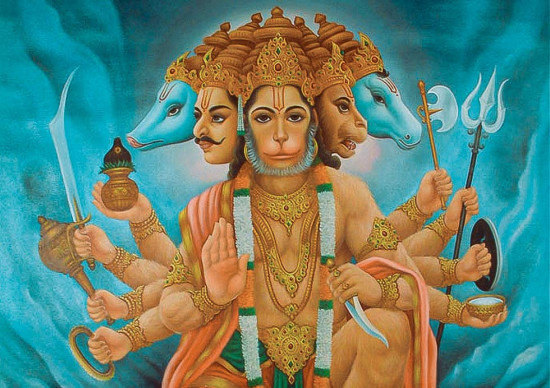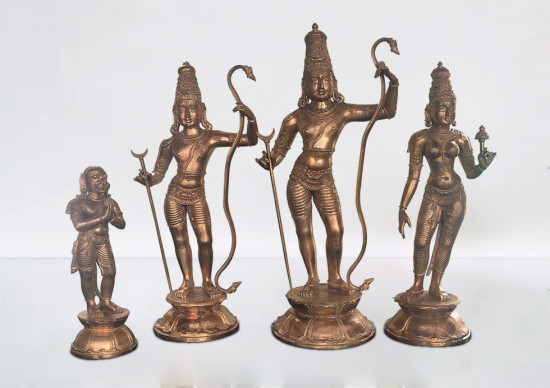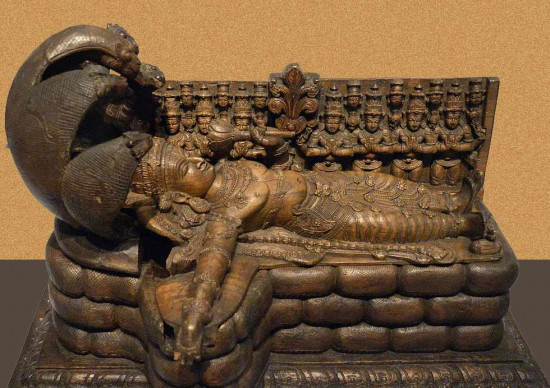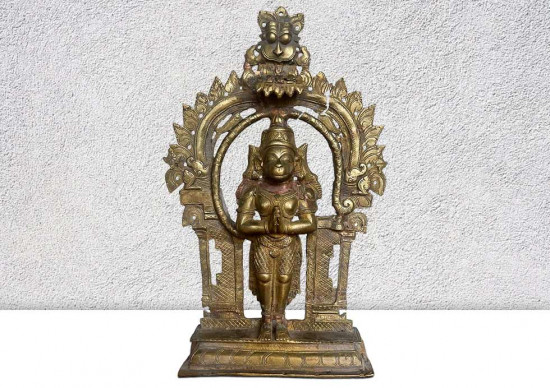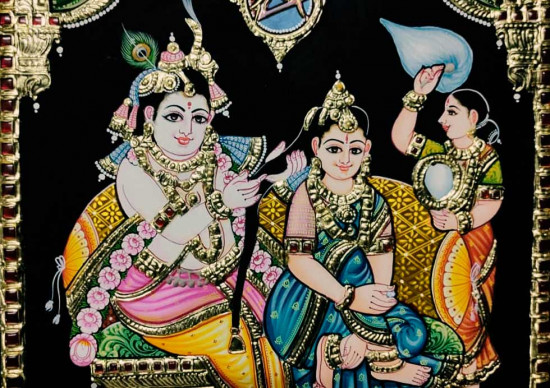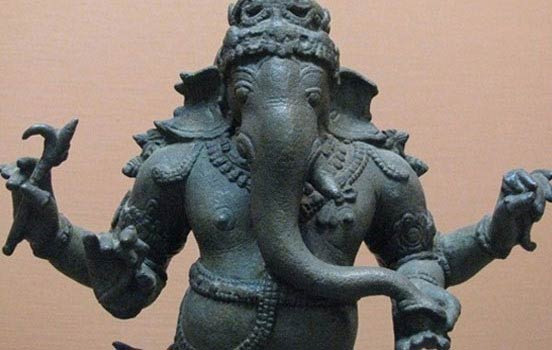
Did you know Brahma (officiating as priest at the event of the marriage of Shiva and Paarvati), invoked Ganesha, seeking his blessings for the divine couple entering married life?
Since Ganesha is Shiva’s son – born solely of Parvati (another seeming conundrum that would require a separate article to elucidate) this may sound like an absurdity to most.
Ignorance and scorn of the Puranas have led to the coining of an excessively simplistic, bordering-on-derogation term “Elephant Headed god” for Vighneshvara – the Lord of Obstacles.
The invocation of Ganesha for blessing the marriage of his very parents is pregnant with profound Vedic concepts. The apparent contradiction however can easily lead many to toss it in the dustbin as an incoherent fantasy in the Puranas.
But it isn’t a problem to those who understand the Vedic concepts of eternity and cyclicity.
The Supreme is eternal and has endless attributes. The same One manifests as many.
Since an attribute presupposes a form, the eternity of attribute would imply eternity of form. So if any one of the endless attributes of the Supreme is focused on, it necessarily must also assume a form predominated by that attribute.
Ganesha is such a form of that attribute of the Supreme that both causes and removes obstacles. It is eternal and real.
As Naaraayana himself declares in Bhagvad Gita:
Among the gods, I’m their king Indra
Among the animals I’m Lion
Among the deceivers I’m Gamble
Since Ganesha is Shiva’s son – born solely of Parvati (another seeming conundrum that would require a separate article to elucidate) this may sound like an absurdity to most.
Ignorance and scorn of the Puranas have led to the coining of an excessively simplistic, bordering-on-derogation term “Elephant Headed god” for Vighneshvara – the Lord of Obstacles.
The invocation of Ganesha for blessing the marriage of his very parents is pregnant with profound Vedic concepts. The apparent contradiction however can easily lead many to toss it in the dustbin as an incoherent fantasy in the Puranas.
But it isn’t a problem to those who understand the Vedic concepts of eternity and cyclicity.
The Supreme is eternal and has endless attributes. The same One manifests as many.
Since an attribute presupposes a form, the eternity of attribute would imply eternity of form. So if any one of the endless attributes of the Supreme is focused on, it necessarily must also assume a form predominated by that attribute.
Ganesha is such a form of that attribute of the Supreme that both causes and removes obstacles. It is eternal and real.
As Naaraayana himself declares in Bhagvad Gita:
Among the gods, I’m their king Indra
Among the animals I’m Lion
Among the deceivers I’m Gamble

……….. and so on, among the ‘removers and causers of obstacles’ He is Ganesha.
Ganesha, therefore, is the eternal Lord of Remover Obstacles and the eternal son of Shiva and Parvati. He existed before the marriage of Shiva and Parvati waiting for the divine couple to indulge in sport and to manifest thereof.
This again confuses many endlessly because they do not understand the timelessness of the Puranas.
They have no idea that the same Ganesha manifests time and again within the infinite expanse of time. He has been manifesting since eternity and he will manifest eternally as and when Shiva and Parvati will unite.
So the various stories of Ganesha’s birth in different Puranas are looked upon as contradictory childish utterings.
Consider the three stories below.
Ganesha, therefore, is the eternal Lord of Remover Obstacles and the eternal son of Shiva and Parvati. He existed before the marriage of Shiva and Parvati waiting for the divine couple to indulge in sport and to manifest thereof.
This again confuses many endlessly because they do not understand the timelessness of the Puranas.
They have no idea that the same Ganesha manifests time and again within the infinite expanse of time. He has been manifesting since eternity and he will manifest eternally as and when Shiva and Parvati will unite.
So the various stories of Ganesha’s birth in different Puranas are looked upon as contradictory childish utterings.
Consider the three stories below.
Ganesha’s Birth 1
Shiva was in a habit of barging into Paarvati’s inner chambers without announcing.
This caused her great discomfort as she felt her modesty violated.
As a solution, she created a doll out of the discard she obtained after rubbing off the smeared cleansable on her body. She blessed it with life and called him her son.
After installing him at the entrance she gave him strict instructions not to let anyone enter. She then went to her bath.
The boy, following the instructions of his mother, refused entry even to Shiva. Furious, Shiva cut off his head with his trident.
Enraged at Shiva’s act, Paarvaati assumed her fierce form of Adi-Parashakti and threatened to annihilate all the three planes of existence.
She was eventually pacified by bringing the boy back to life with his head replaced with that of an elephant.
Shiva named him Ganesha and it was decreed by him that no auspicious undertaking would culminate (or in other words yield its full fruit) if Ganesha is not first invoked before its commencement.
(Shiva Purana)
This caused her great discomfort as she felt her modesty violated.
As a solution, she created a doll out of the discard she obtained after rubbing off the smeared cleansable on her body. She blessed it with life and called him her son.
After installing him at the entrance she gave him strict instructions not to let anyone enter. She then went to her bath.
The boy, following the instructions of his mother, refused entry even to Shiva. Furious, Shiva cut off his head with his trident.
Enraged at Shiva’s act, Paarvaati assumed her fierce form of Adi-Parashakti and threatened to annihilate all the three planes of existence.
She was eventually pacified by bringing the boy back to life with his head replaced with that of an elephant.
Shiva named him Ganesha and it was decreed by him that no auspicious undertaking would culminate (or in other words yield its full fruit) if Ganesha is not first invoked before its commencement.
(Shiva Purana)
Ganesha’s Birth 2
Once Paarvati pointed out to Ganesha the planet Saturn in full view. Ganesha looked at it and due to the intense, fierce stare of Saturn his head got burnt off. It was later on replaced with that of an elephant.
(Padma Purana)
(Padma Purana)
Ganesha’s Birth 3
Once Shiva and Paarvati were passing by a forest where they saw an elephant couple copulating.
Enamored by their love act, Paarvati expressed her desire to make love to Shiva similarly.
Shiva assumed the form of a tusker and Paarvati that of a she-elephant. They made love and Ganesha was born.
(UttaraRaamaayana)
Three different birth events of a single entity render most theologians perplexed notwithstanding their sincerity and knowledge. Confirming to rigid, narrow and prescriptive Western view of theology, they try to either explain away these stories by apologetically interpreting them as vague psychological abstracts or simply deny them as sheer mythology in the Puranas
Again the issue here is their poor knowledge of Vedic concepts.
They do not understand that Ganesha has been manifesting endlessly in endless epochs in endlessly different circumstances as a result of the endless Shiva-Shakti play.
Ganesha, even though sporting an elephant head, has nothing to do with an elephant. Just as Vishnu is not a fish, boar or lion though he did assume such incarnations.
Gajaanana is an epithet of Ganesha. A Sanskrit word which means ‘the one who has the face of an elephant’.
There is an inherent implication in this word that the elephant face was assumed within in a set of time and circumstance. Ganesha assumed an elephant face; Ganesha is not an elephant much like someone sitting on a buffalo is not a buffalo.
On the other hand ‘The Elephant Headed god’ is a meaningless phrase put together in ignorance, haste or maybe scorn.
Enamored by their love act, Paarvati expressed her desire to make love to Shiva similarly.
Shiva assumed the form of a tusker and Paarvati that of a she-elephant. They made love and Ganesha was born.
(UttaraRaamaayana)
Three different birth events of a single entity render most theologians perplexed notwithstanding their sincerity and knowledge. Confirming to rigid, narrow and prescriptive Western view of theology, they try to either explain away these stories by apologetically interpreting them as vague psychological abstracts or simply deny them as sheer mythology in the Puranas
Again the issue here is their poor knowledge of Vedic concepts.
They do not understand that Ganesha has been manifesting endlessly in endless epochs in endlessly different circumstances as a result of the endless Shiva-Shakti play.
Ganesha, even though sporting an elephant head, has nothing to do with an elephant. Just as Vishnu is not a fish, boar or lion though he did assume such incarnations.
Gajaanana is an epithet of Ganesha. A Sanskrit word which means ‘the one who has the face of an elephant’.
There is an inherent implication in this word that the elephant face was assumed within in a set of time and circumstance. Ganesha assumed an elephant face; Ganesha is not an elephant much like someone sitting on a buffalo is not a buffalo.
On the other hand ‘The Elephant Headed god’ is a meaningless phrase put together in ignorance, haste or maybe scorn.

